In this article, we take a look at what the RIPE NCC's data shows us about Hungary in terms of membership development, IPv6 deployment, RIPE Atlas coverage and other factors that we compare to neighbouring countries.
The RIPE Meeting returns to Hungary on 8 May 2017, the first time there's been a RIPE Meeting in Budapest since 2000. Only 13 of our 145 Hungarian LIRs were active when that meeting took place, while fewer than 1,000 of the current overall membership were active back then. The Internet and the RIPE NCC membership has grown considerably since then and there have been many developments over the past 17 years.
In this latest article focusing on countries using data available at the RIPE NCC, we concentrate on Hungary and where instructive we compare it to Austria, the Czech Republic and Slovakia. These countries have obvious geographical ties and historical links to Hungary, although you can see from the data below that there are clear differences in terms of Internet and membership developments in those countries. Figures in the table below for area and population are from Wikipedia.
| Country | Population | Area (km2) | LIRs |
|---|---|---|---|
| Hungary | 9,799,000 | 93,028 | 145 |
| Austria | 8,773,686 | 83,871 | 303 |
| Czech Republic | 10,578,820 | 78,865 | 413 |
| Slovakia | 5,435,343 | 49,037 | 104 |
Please note that this article, unless otherwise noted, shows a snapshot of the situation as seen on 3 May 2017. However, in most cases we also provide a link to the most up-to-date information.
Hungary at a glance
| Number of ASNs assigned | 253 |
| Number of Local Internet Registries | 145 |
| Number of IPv4 allocations | 374 |
| Number of IPv4 assignments | 102 |
| Number of IPv4 addresses allocated | 5,139,968 |
| Number of /22s allocated from the last /8 | 99 |
| Number of LIRs with IPv6 allocations | 98 |
| Size of IPv6 allocations (/32s) | 295 |
| Number of IPv6 assignments | 7 |
| RPKI with route object authorisation (ROAs) | 16 |
Membership Growth
In Figure 1, you can see the growth of the number of Local Internet Registries (LIRs) in Hungary, Austria, the Czech Republic and Slovakia. As of 3 May 2017, there are 145 LIRs registered in Hungary. The chart shows data up to the end of Q1 2017 so the figure shows the 144 that were active then.

Figure 1: Number of LIRs in Hungary, Austria, the Czech Republic and Slovakia on 31 March 2017
For comparison, Figure 2 shows the growth in the number of all LIRs registered with the RIPE NCC since 2008. There are currently over 15,700 LIRs registered with the RIPE NCC. Note that the numbers for 2017 only contain data up to the end of March.
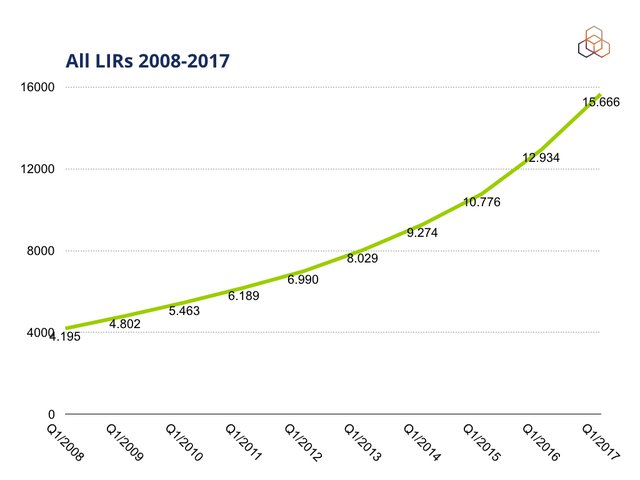
Figure 2: Number of all LIRs in the RIPE NCC service region from 2008 - 2017
The next figure shows the age of the LIRs in Hungary. You can see that 37 LIRs in Hungary have joined the RIPE NCC in the past two years. In contrast with the overall picture for LIRs in our service region where the largest segment of LIRs are those that joined in the past two years (Figure 3b), the biggest group of Hungarian LIRs are at least ten years old (45 LIRs).
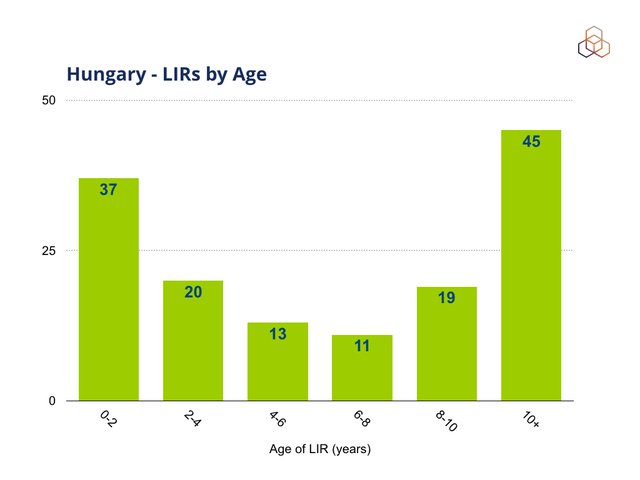
Figure 3: Age of LIRs in Hungary
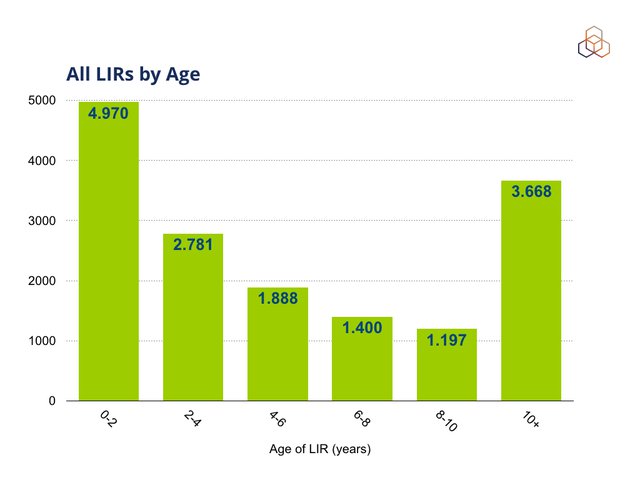
Figure 3b: Age of all LIRs in RIPE NCC service region
IPv6 Deployment in Hungary
IPv6 RIPEness is a rating system that awards stars to LIRs in the RIPE NCC service region depending on indicators of IPv6 preparedness. Stars are awarded for:
- Having an IPv6 allocation or assignment from the RIPE NCC
- Making the IPv6 prefix visibility in the Routing Information Service (RIS)
- Having a route6 object registered in the RIPE Database
- Having reverse DNS delegation set up for the IPv6 allocation
Figure 4 shows the situation in Hungary. You can see that 68% of all LIRs in the country have an IPv6 allocation and 40% of Hungarian LIRs have done something with their IPv6 allocation. And 32% (or 47 LIRs) don't have an IPv6 allocation yet.

Figure 4: IPv6 RIPEness in Hungary
In Figure 5, you can see the situation for all LIRs in the RIPE NCC service region. 75% of all LIRs have an IPv6 allocation, and around 46% have started using it one way or another (by meeting one of the criteria listed above).
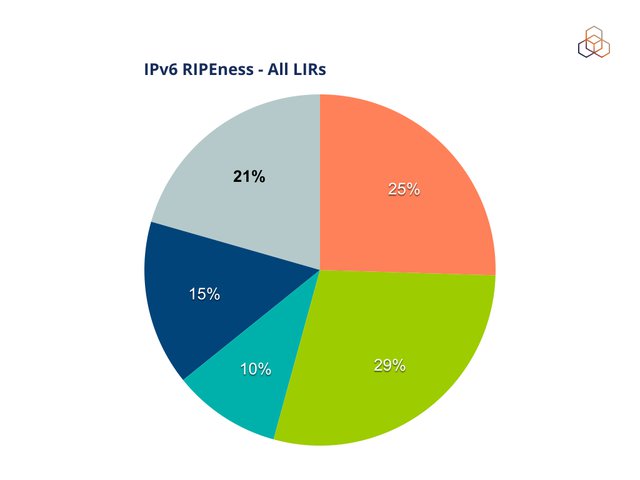
Figure 5: IPv6 RIPEness for all LIRs
In Figure 6, we show the percentage of ASes announcing one or more IPv6 prefixes in Hungary and the countries we compare it with. You can find the current status of these countries using the IPv6 Enabled Networks tool. This tool also allows you to search for other countries or regions worldwide.

Figure 6: ASes announcing one or more IPv6 prefixes in Hungary, Austria, the Czech Republic and Slovakia
Country Routing Statistics
Figure 7 visualises the development of the IPv4 and IPv6 prefixes and ASes in Hungary over time.
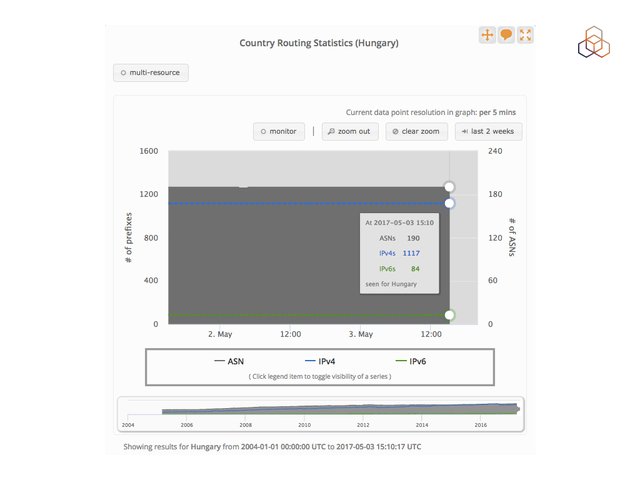
Figure 7: RIPEstat country routing statistics in Hungary
You will notice that the number of IPv6 prefixes and the number of ASNs in this widget are not consistent with the number shown in the table above. The table shows those allocations and assignments made by the RIPE NCC to organisations registered in Hungary. The RIPEstat widget on the other hand shows what's actually happening in the real world: The 374 IPv4 allocations made by the RIPE NCC have been de-aggregated into 1,117 individual prefixes that are announced by 190 ASes (instead of the 253 ASes assigned by the RIPE NCC to organisations in Hungary).
You can see the current status in the RIPEstat country routing widget. You can also use that widget to compare multiple countries.
RIPE Atlas
RIPE Atlas is a global network of probes that measure Internet connectivity and reachability, providing an unprecedented understanding of the state of the Internet in real time. The more probes that are distributed and connected worldwide, the more useful data can be collected that can then be used by network operators and researchers to analyse the state of the Internet.
The embedded RIPEstat widget below shows the number of RIPE Atlas probes in the region. Green dots indicate connected probes, yellow dots show disconnected probes and red dots indicate those that are abandoned (i.e., not connected for more than three months).
If you have a RIPE Atlas probe, please double-check it is connected properly so that the community can benefit from the data it produces
RIPEstat widget will be rendered here
Figure 8 shows the actual number of RIPE Atlas probes in Hungary, Austria, the Czech Republic and Slovakia.

Figure 8: Number of RIPE Atlas probes in Hungary, Austria, the Czech Republic and Slovakia
Participation at the General Meeting
The RIPE NCC General Meeting (GM) also takes place in Budapest from 10-12 May. This is the forum where, twice a year, RIPE NCC members can register to have their say on how the RIPE NCC operates.
At the upcoming GM on 10 May 2017, there will be an election for three seats on the Executive Board and members will vote on the Charging Scheme for 2018. Electronic voting and remote participation options are available to all members.
Almost 1,200 members registered for the last GM in October 2016. Of these, 10 members from Hungary registered to participate. Hungary has already registered a record number of votes for the upcoming GM (18) and we hope to see more before voting commences on the evening of 10 May. Almost 1,100 members have registered votes so there is every chance we will see a record number of vote registrations. Figure 9 shows the registration numbers for Hungary since electronic participation became available in 2014.
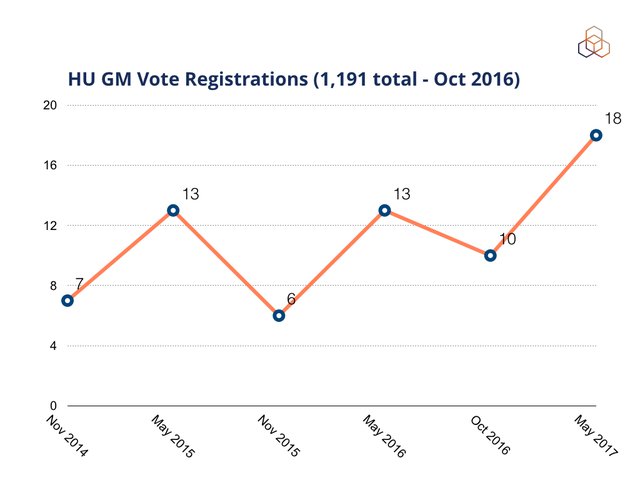
Local Networking Communities
The RIPE 74 Meeting in Budapest next week presents a great opportunity for Hungarian operators and other stakeholders in the Internet industry there to come together and network with colleagues from Hungary and around the world. We are looking forward to seeing many of Hugarian members there.
There is also the Council of Hungarian Internet Providers (Magyarországi Internetszolgáltatók Tanácsa) has existed since 1997 to coordinate organisations in the Hungarian Internet and provide a voice for their interests.
Conclusion
In contrast with the overall RIPE NCC membership, most of the LIRs in Hungary are well-established. Forty-five of 145 LIRs are part of the RIPE NCC for ten years or longer. We see 23.1% of ASNs in Hungary announcing IPv6, which is below Austria and the Czech Republic but very close to the figure for Slovakia. The RIPE Meeting takes place in Budapest next week, so it will be interesting to see if this has any effect on Hungarian Internet and membership development in the coming months.
If there is other information you'd like to see, or you have specific comments on the Hungary information provided, please let us know in the comments below.

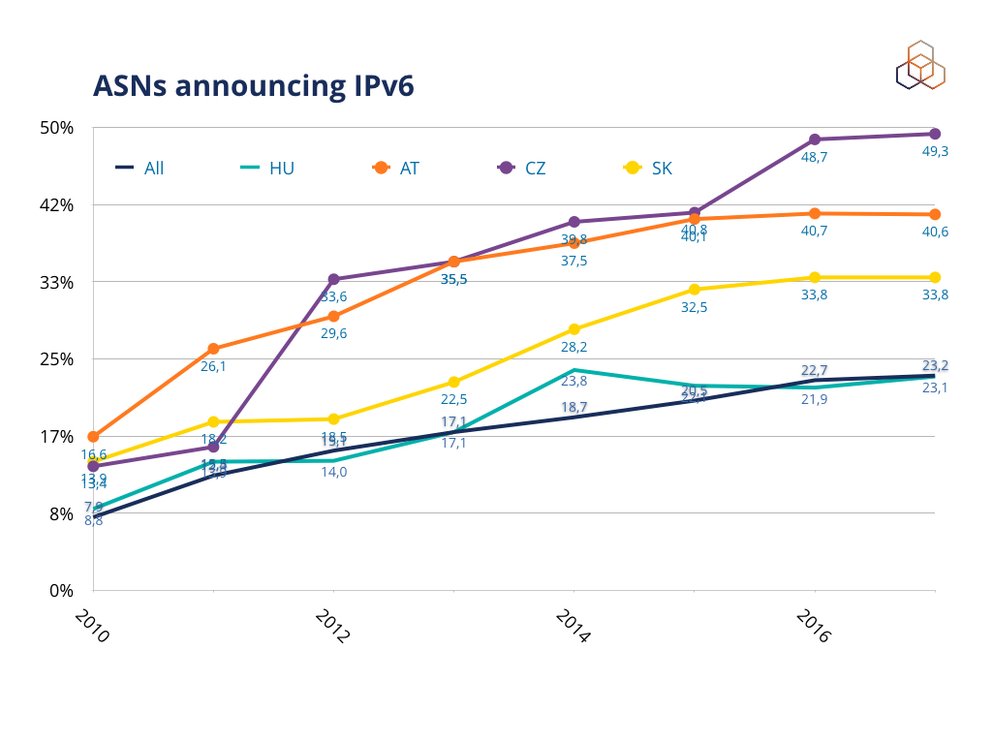
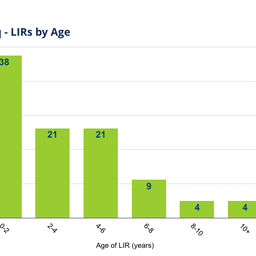
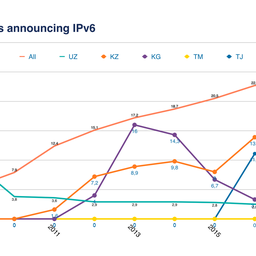
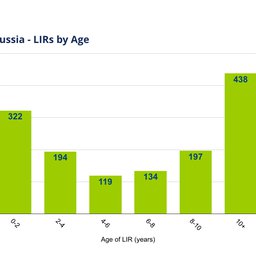
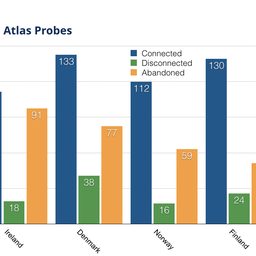
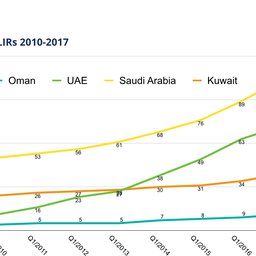



Comments 0
The comments section is closed for articles published more than a year ago. If you'd like to inform us of any issues, please contact us.